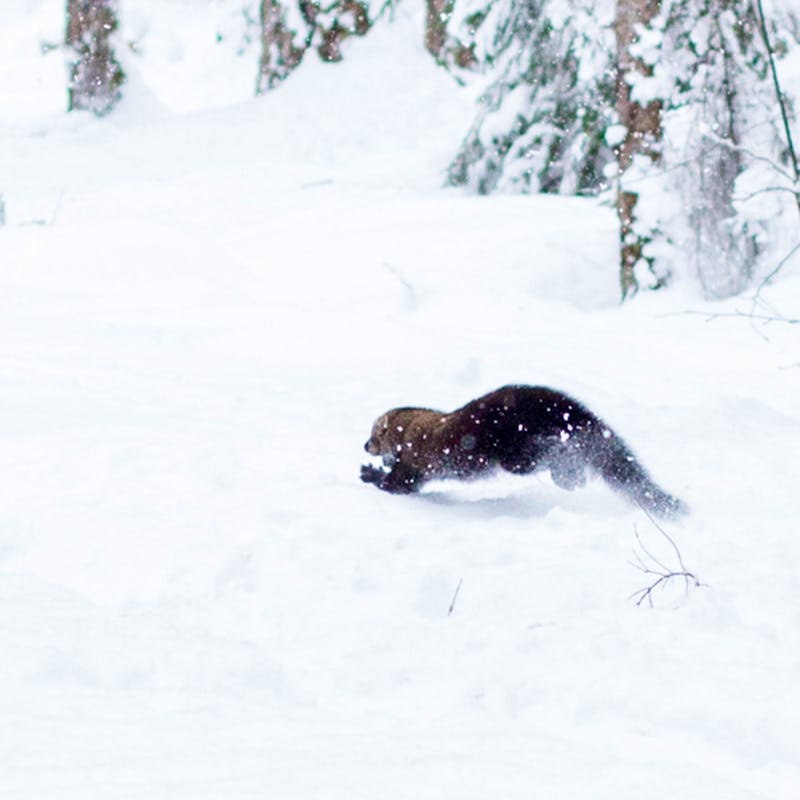Our Voice: ‘Big bad wolf’ Image Doesn’t Match Behavior: No one has more involvement in Idaho’s wolf conservation than Defenders’ Senior Northwest Representative, Suzanne Stone. She was a Yellowstone and Idaho wolf reintroduction team member, and she is also one of the top livestock-wolf conflict prevention experts in the country with nearly 30 years of “frontlines” field experience. Seven years ago, working with Idaho’s Blaine County, Lava Lake Land & Livestock and the U.S. Forest Service, Suzanne helped Defenders of Wildlife start what is today the nation’s largest wolf and domestic sheep coexistence operation in Idaho’s Wood River Valley. But, while Suzanne and others continue to make great strides towards protecting wolves in the West, Idaho politicians’ state-sponsored war on wolves is far from over. We continue to battle high levels of animosity for wolves taken directly from fairytales and folklore. Suzanne recently published her thoughts on the matter in an opinion piece in the Idaho Statesman. As Suzanne says: demonizing wolves doesn’t match reality. We hope you’ll take the time to read the latest from one of the top wolf advocates in the country!

Two Wolves Poached in Montana: Montana Fish Wildlife and Parks Enforcement reported that two wolves were poached in southwest Montana in May. One wolf was killed just outside of Yellowstone National Park near Gardiner and the other wolf was killed just north of the Centennial Valley. Montana’s wolf hunting season ended on March 15. The fine for killing a wolf outside of hunting season is $1,000. A reward is being offered for any information that helps solve this crime. We hope that law enforcement finds and brings the people responsible for the killing of these wolves to justice and deter future tragic killings.
Expansion Trend Continues in Washington: As you may have heard, in May, a gray wolf successfully crossed over the Cascade Crest in Washington, making it as far as Interstate-90 between North Bend and Snoqualmie Pass before it was tragically killed when hit by a vehicle. Now, another wolf has made headlines for dispersing into a new area of in Washington State. Wildlife monitoring cameras recently recorded pictures of a wolf between Leavenworth and Stevens Pass in the north central portion of the state. There is ample suitable habitat for wolves across much of Washington, including throughout the National Forests in the Cascades, on state and private forest lands in southwest Washington, and in Olympic National Park. But, to date, the majority of that habitat remains unoccupied, and western Washington hasn’t had a resident wolf population since the early 1900s. We’re of course thrilled by any wolf dispersal in the state–it’s a sign of progress in Washington’s ongoing wolf conservation story!
The Science Behind the “Genetic Rescue” of Mexican Gray Wolves: By the 1970s, Mexican gray wolves – still the rarest type of wolf in the world– were almost wiped from the face of the earth. In fact, every Mexican wolf alive today is a descendant from only seven individuals. While efforts are underway to recovery this species, scientists and wildlife conservationists face the ongoing struggle of ensuring this species has the genetic diversity it needs to survive. With such a limited gene pool, wildlife biologists look for every opportunity to add different genetics to the current population of just over 100 Mexican gray wolves living in the Southwestern U.S.

The easiest strategy is simply releasing captive Mexican gray wolves into the wild, hoping these animals will find mates and produce pups. But recently, another strategy is gaining momentum. Called “cross-fostering,” this strategy mirrors the concept of our own parent foster care. When it comes to cross-fostering for Mexican gray wolves, wildlife biologists introduce infant pups from one litter – perhaps pups born in captivity or wild-born pups with an inexperienced mom –into a wild litter with an experienced mom. The hope is that the surrogate mom will then raise the pups as her own. Wolves cannot count and when pups are very young, the likelihood of the surrogate mother assuming responsibility is high.
This is a complicated strategy because it involves finding two litters of pups that are very close in age and moving pups long distances. So far, it’s been employed successfully once for Mexican gray wolves. In May last year, the Service cross-fostered two pups into a den with a more experienced mother —part of the Dark Canyon Mexican gray wolf pack in New Mexico. Right now, wildlife biologists are looking for denning females in the Apache National Forest that they believe could be good candidates for cross-fostering new pups.
We are hopeful that cross-fostering continues to improve the genetics of wild Mexican gray wolves. But, it cannot make up for what the Service must continue to do if lobos are to survive and thrive. First, the Service needs to develop a detailed “genetic rescue” plan to improve the sustainability of the population. Such a plan should not only include cross-fostering, but it should also request that the Service release many more wolves from captivity and also require the Service to establish additional populations of wolves. In addition, the Service must develop a science-based recovery plan. Lobos have been waiting almost 40 years for this recovery plan – no wonder they remain on the edge of extinction!!




